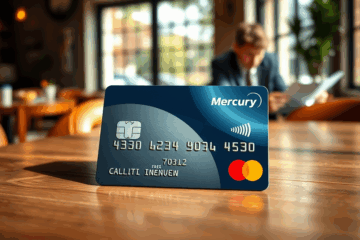Clean Your Name Using Your Credit Card Wisely
Credit Card issues can significantly impact your financial reputation and overall well-being.
In this article, we will delve into the essential steps you can take to clean your name associated with a credit card.
Whether you need to remove yourself as an authorized user, handle joint accounts, or address identity theft, understanding the process is crucial.
By following the right steps and communicating effectively with your credit card issuer, you can take control of your credit situation and work towards a cleaner financial future.
Credit Cards as Tools for Credit Recovery
Credit cards, when used effectively, serve as powerful tools in credit repair and can significantly contribute to clearing your financial reputation.
By demonstrating responsible credit usage through timely payments and maintaining a low credit utilization ratio, individuals can gradually enhance their credit scores.
According to FICO’s Credit Education, consistent management of credit card accounts reflects positively on one’s payment history, which is a critical component of credit scoring models.
The strategy involves making monthly payments on time and keeping balances below 30% of the card’s limit.
This not only improves the score but also signifies financial responsibility to lenders.
Furthermore, owning a secured credit card can be particularly beneficial for those starting from a point of bad credit.
Sometimes, establishing this method of credit rebuilding can be facilitated by reviewing credit reports regularly, as suggested by Citi’s Credit Rebuild Program.
As you engage in these practices, you simultaneously reduce any negative remarks and repair your credit, ultimately reflecting a more trustworthy profile to creditors.
Thus, credit card use stands not merely as a means of access to funds but as a strategic ally in the path to sound financial health.
Correcting Credit Report Errors Through Your Card Issuer
Discovering errors on your credit report can be frustrating and may negatively impact your financial health.
Fortunately, your credit card issuer can assist you in correcting these inaccuracies through a straightforward dispute process.
By following specific steps, you can ensure that harmful entries are addressed and your credit report reflects accurate information.
Contacting the Issuer to Dispute Inaccuracies
Contacting your card issuer for credit disputes is essential when dealing with inaccuracies in your credit report.
Follow these steps to ensure correction:
- Gather documentation supporting your claim.
- Contact the card issuer using the number on the back of your card or online.
- Request the necessary forms for disputing inaccuracies.
- Submit your documentation and request in writing.
- Follow up to confirm receipt and review status.
Understanding your rights is crucial.
“Consumers are protected by the Fair Credit Reporting Act.
“
This law ensures inaccuracies are corrected and consumers are notified of their rights.
Consider reaching out to the Consumer Financial Protection Bureau if issues persist or further assistance is needed.
Managing Shared Credit Responsibilities
Managing shared credit responsibilities is crucial for maintaining healthy credit for all parties involved.
When multiple individuals are linked to a single credit card account, clear communication and understanding of each person’s financial obligations can help protect everyone’s credit standings.
Establishing guidelines for usage and payments can prevent misunderstandings and ensure that both parties can benefit from a positive credit experience.
Removing Yourself as an Authorized User
To remove yourself as an authorized user from a credit card, begin by having the primary cardholder contact the credit card issuer.
They can do this by calling customer service or using the card issuer’s online account management options, as indicated by sources like Nerdwallet’s guide to removal.
It’s essential for them to specify your removal request to avoid future financial obligations linked to the account.
Then, follow up with each credit bureau, filing a dispute to ensure the account is no longer associated with your credit report, further solidifying the dissociation process.
Overseeing Joint Credit Card Accounts
When managing a joint credit card, consistent payment monitoring is crucial to ensure neither party’s credit profile suffers.
Both parties should agree on responsibility sharing, setting clear guidelines for payments and usage.
Consider utilizing options to separate accounts if disparities in financial behavior arise, which helps protect your credit integrity.
According to The Points Guy, joint accounts can pose greater risk compared to authorized user setups.
“Timely coordination prevents late-payment dings,” advises credit educator Jane Doe.
Regular communication about expenses prevents misunderstandings, thus safeguarding your credit scores effectively.
Responding to Identity Theft Involving Credit Cards
Identity theft involving credit cards can be a distressing experience that requires immediate attention and action.
Understanding the steps to report identity theft is crucial for safeguarding your financial well-being and restoring your credit standing.
This guide will provide a clear step-by-step process to effectively address identity theft related to credit cards.
Filing and Following Up on Fraud Reports
Upon detecting identity theft, promptly initiate the recommended actions.
The Federal Trade Commission recommends placing a credit freeze immediately.
This step helps to stop further misuse of your personal information by making it difficult for identity thieves to open new accounts in your name.
Next, report the identity theft to your financial institutions to prevent additional fraudulent activity and ensure your accounts’ safety.
As a follow-up, regularly monitor your credit report for any suspicious changes or new accounts.
Utilize tools such as FTC’s guidance on monitoring your credit to stay vigilant.
Additionally, set fraud alerts on your credit reports to receive notifications of any unusual activity, keeping your identity secure.
These actions make a big difference in minimizing damage and safeguarding your financial health.
Building Lasting Credit Health with Responsible Card Use
Building a lasting credit health with responsible card use involves cultivating ongoing habits that keep your credit history clean and leverage credit cards safely.
Adopting these habits ensures you maintain a good credit score and prevent potential financial pitfalls.
Keeping an eye on your credit utilization ratio is vital.
Citi advises keeping this below 30% to avoid a negative impact on your score.
Additionally, regularly monitor your credit report to catch any discrepancies early.
This proactive approach helps in rectifying any issues promptly.
Consider using credit cards with rewards and incentives that align with your spending habits.
This not only saves money but also positively impacts your credit score when payments are made responsibly.
Finally, ensure you’re aware of the fees and rates associated with each credit card.
- Pay on time every month.
- Maintain a low credit utilization ratio.
- Regularly check your credit report.
- Use credit cards for beneficial rewards.
In conclusion, cleaning your name associated with a credit card is vital for maintaining a healthy credit profile.
By taking proactive measures and addressing any issues promptly, you can safeguard your financial standing and enjoy peace of mind.



0 Comments